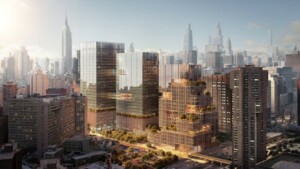On Tuesday afternoon, protesters gathered outside of McKim, Mead, & White’s Farley Post Office on Manhattan’s 8th Avenue. They were demonstrating against the proposal to demolish much of the area surrounding Penn Station for the proposed construction of ten office towers. As part of the demonstration, 55 coffins were laid in front of the building’s monumental steps—one for each building slated for demolition. The protest was organized by the non-profit ReThink Penn Station, which has actively spoken out against the redevelopment for years.
The protest featured speeches from a number of community leaders and also included two protesters impersonating author and urban theorist Jane Jacobs and musical performances. Alison Greenberg, a director at the Historic Districts Council, read off the names of some of the more prominent buildings slated for demolition, including the Hotel Pennsylvania, the art deco Gimbel’s Skybridge, and the Penn Station Powerhouse, also designed by McKim, Mead, & White.
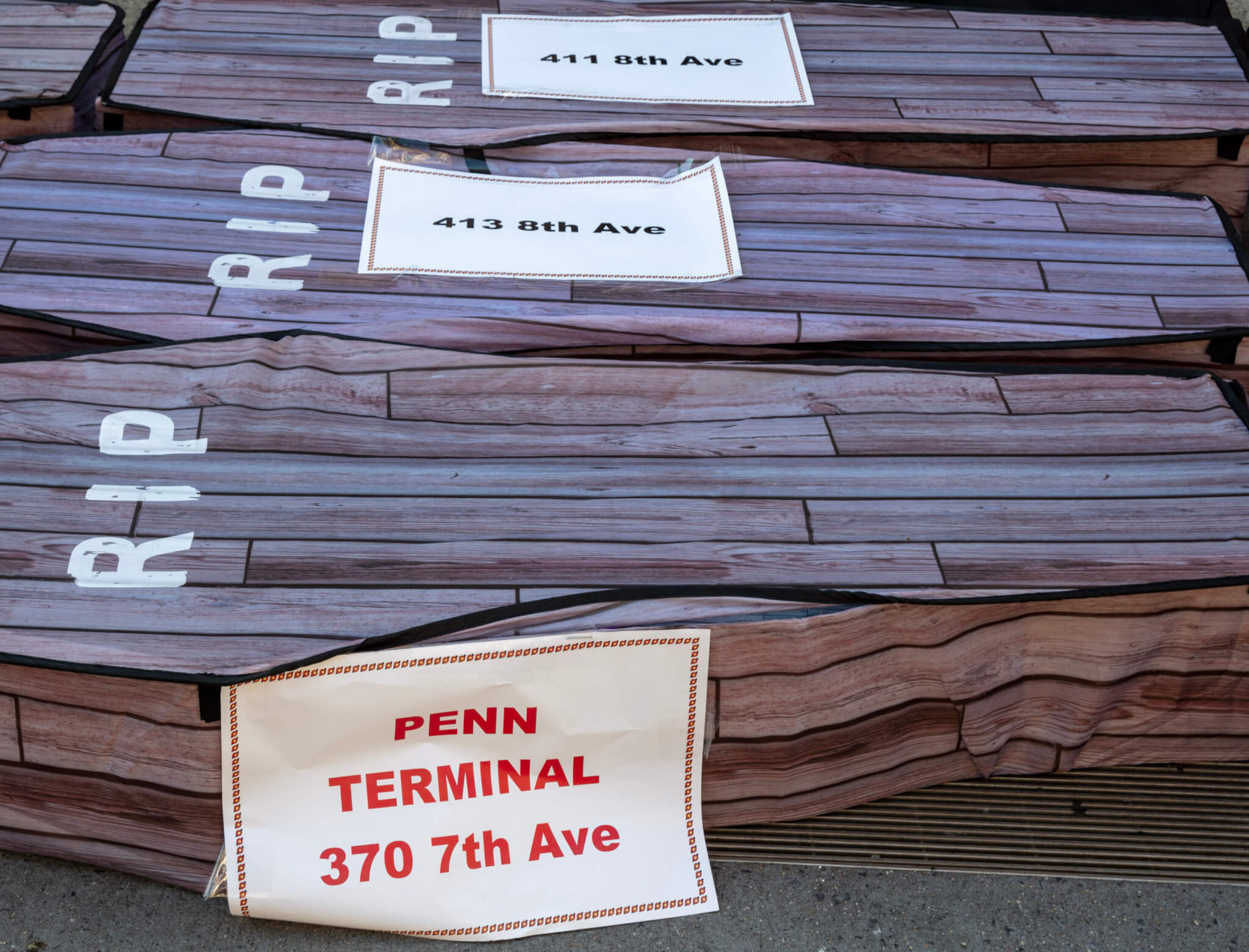
Vornado Realty Trust, the developer leading the project, and its president, Steven Roth, came under attack from a number of speakers. Roth was a major donor to Governor Kathy Hochul’s campaign, as well as former Governor Andrew Cuomo’s, who was in office when the redevelopment plan started. Since coming aboard Hochul trimmed back the scheme initially proposed under the Cuomo administration and placed a much-needed focus on revamping Penn Station.
Greenberg likened Roth to urban planner Robert Moses, calling him “another man who has a plan to throw thousands of people out of their homes.” Greenberg mourned the impending death of the 55 structures, and of the Landmarks Preservation Commission (LPC), which she targeted for failing to protect historic buildings in the neighborhood. Layla Law-Gisiko, Chair of Community Board 5’s Land Use, Housing & Zoning Committee, argued that the plan to increase office space was particularly off-putting given the persistent vacancies in office space in the city, including at the new Hudson Yards. Law-Gisiko also criticized Cuomo for pushing the plan through during the early stages of the pandemic, noting that hundreds of New Yorkers were dying daily while the governor made sure to advance Vornado’s proposal.
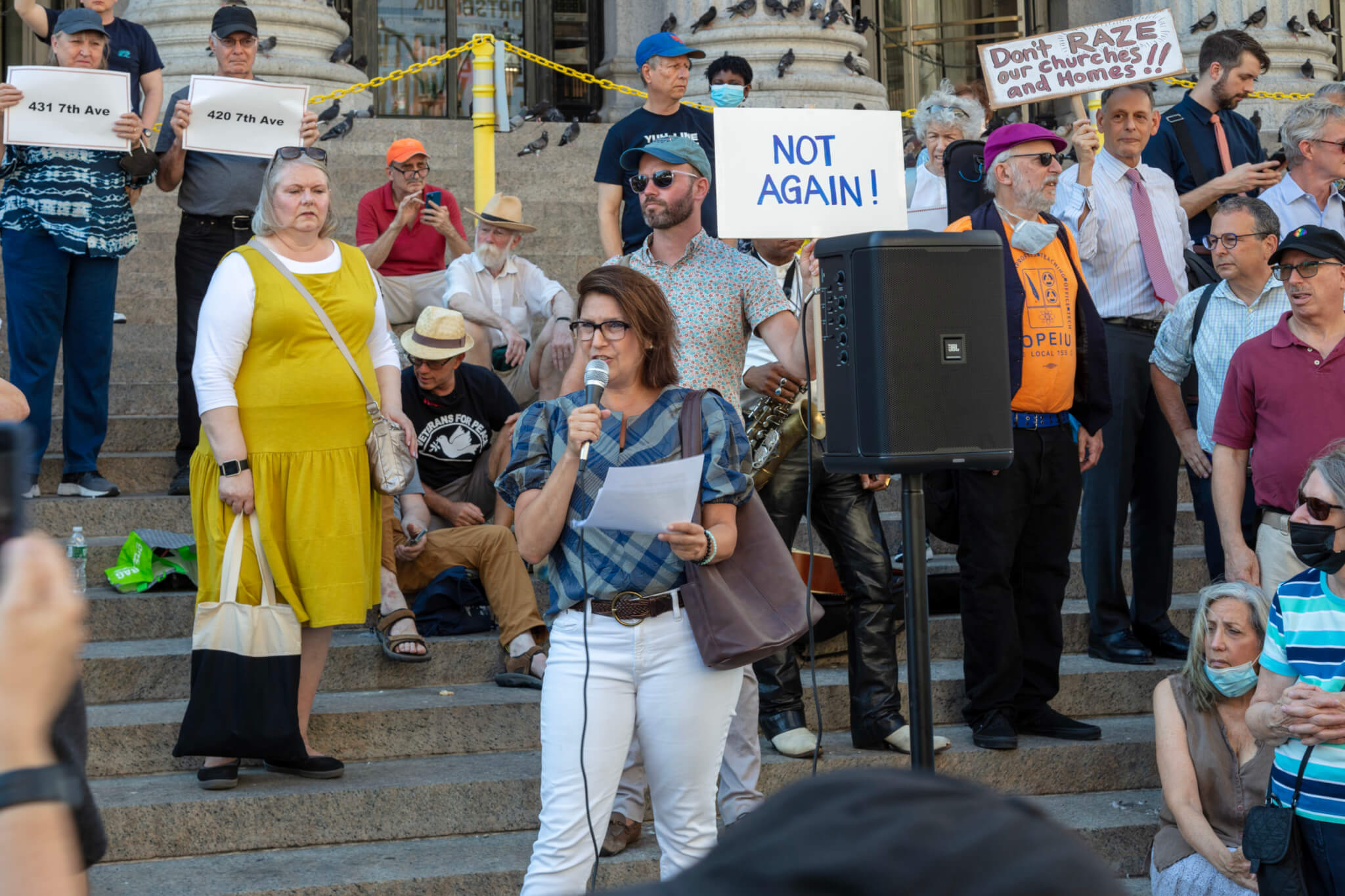
In a rare applause for an elected official, Diana Gonzalez, campaign manager for Trains Before Towers—a group opposing the plan—credited State Senator Leroy Comrie for raising speculation over the development’s financing. Concerns over the project’s financing, which is managed by Empire State Development (ESD)—the organization that oversees New York’s development financing institutions—includes a potential tax break of $1.2 billion distributed among Vornado and other project developers as well as a $3 billion funding gap. The government agency unanimously voted in favor of the Midtown Manhattan megaproject last month. Working Group Resident Representative Eugene Sinigalliano said that the neighborhood is “not blighted, substandard, a slum, or insanitary,” which are among the requirements ESD needs to prove prior to clearing a neighborhood. Sinigalliano argued that because of this, the ESD’s actions are illegal.
Luana Green, president of the Chelsea Reform Democratic Club and longtime Penn South resident, echoed Sinigalliano’s skepticism in calling their neighborhood “blighted”. “This so-called blighted area has always been a tourist attraction,” Green told the crowd in a powerful speech, lamenting that the city is “turning into a glass pavilion.” Green noted the changes in the neighborhood over the years, criticizing the overemphasis on luxury housing, and the losses of healthcare and other critical facilities that would occur under the current redevelopment plan.
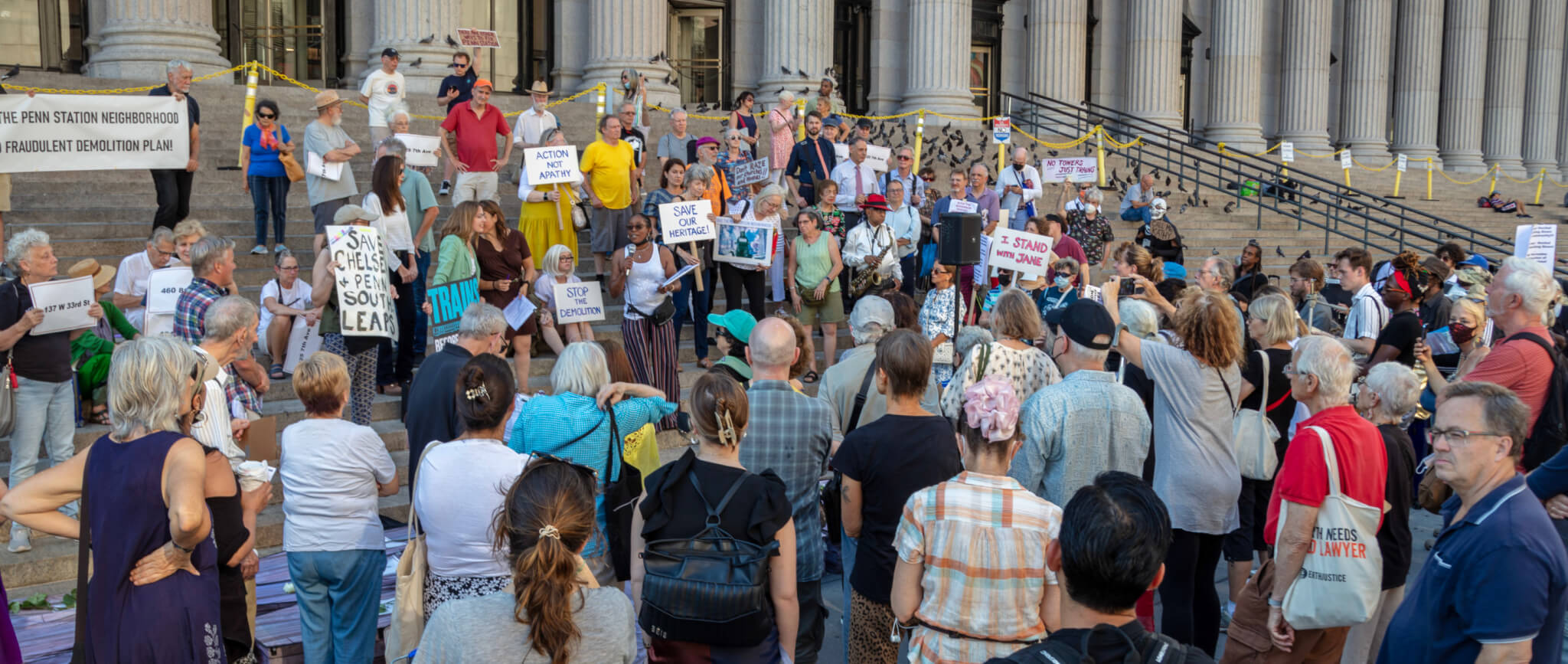
While many speeches focused on the need to preserve the existing neighborhood, there was a general recognition that Penn Station needs significant improvements and that any plan for the community could not stop at historic preservation. Sinigalliano and ReThink Penn Station champion a through-running scheme, which would allow trains to run through Penn Station instead of terminating there. There were calls from Gonzalez for an above-ground expansion for the station and to allow Amtrak to complete its own studies for track expansion prior to approval for any redevelopment.
Turvey likened the current plans as incorporating “transit ideas from the mid-1950s,” emphasizing that the city needs a world-class transit center. Turvey did not mince words calling the current status of the station an “atrocity,” especially in comparison to Washington, D.C.’s Union Station and Philadelphia’s 30th Street Station. Turvey called for the neighborhood to be more like Bryant Park, admiring the coexistence of pre- and post-war architecture there, describing Vornado’s vision for Penn Station as “not a latter-day Rockefeller Center, or even a Battery Park City.”
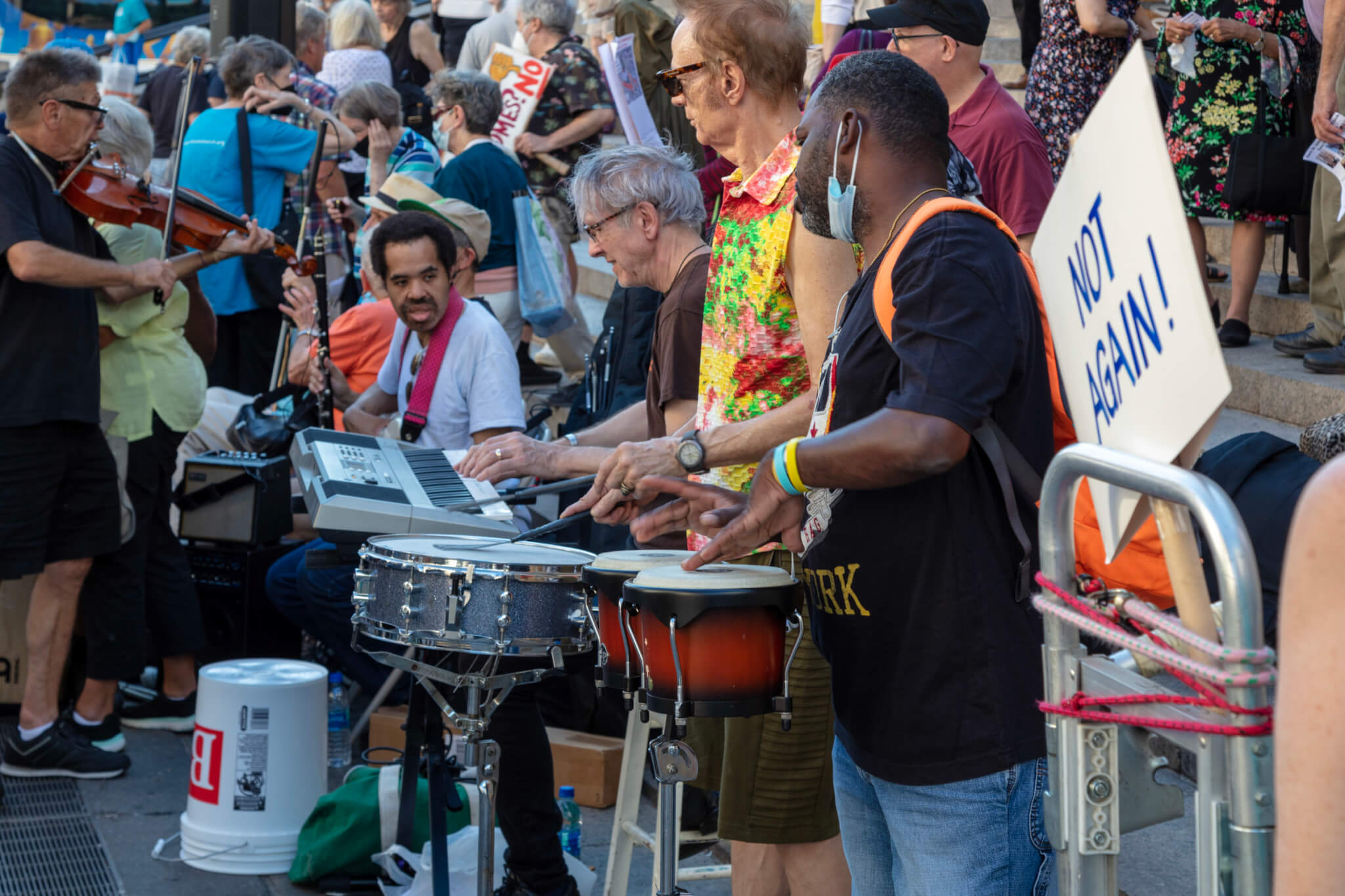
While the crowd was passionate, those against the development face an uphill battle, as they’re aware of the lack of support they have from elected officials. However, there was optimism around what Penn Station could be, amid—harkening back to Jane Jacobs—nostalgia for what it was. Greenberg mentioned the potential to reuse a number of the buildings, arguing that to push for more ground-up construction would be devastating in terms of carbon consumption. Community board chair Law-Gisiko was defiant that the community would prevail. Despite the plans being pushed through against “vociferous community outcry,” she said, “we are going to win.”










